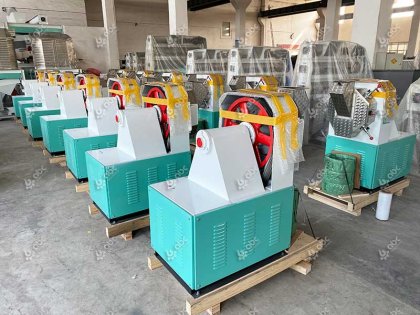The Biomass briquette machines are mainly of 2 types
- Mechanical stamping briquette press
- Screw briquette machine
Mechanical Stamping Briquette Press
This is a kind of a biomass briquette press which is used to make sawdust, straw, bamboo powder, wood chips, stalk, peanut shell, and many more forestry of crop waste into solid fuel briquettes.
Mechanical stamping briquette press, or called punching briquette press, is also used to make both briquettes and pellets. Briquettes made by these machines are cylindrical rod shape. For the one who wants to make briquettes and pellets using one machine, This machine is your solution. The only thing required is to change molds.
Why is it Superior
- The main parts adopt raw materials of high quality and heat treatment which guarantees long service life and decrease rustiness.
- Its power consumption is low
- The motor regulating speed, regulate depending on the raw materials characteristics which enable the material to be evenly fed.
- It's designed to meet different raw materials demand.
Video of rice husk briquette making
Screw Briquetting Machine
The screw designed for this machine enables it to produce hexagon or cylindrical briquettes with a hollow center. This enables the briquette to be to burn fully and easily and make it easy for storage and transportation.
Its raw materials include; wood chips, bagasse, sawdust, cotton stalk, maize straw, peanut shell among others.
Advantages of Screw Briquetting Machines
- It needs no binder in briquetting process.
- The briquettes from this machine have a regular shape, easy to combust, durable to burn, high density and no ash.
- The gearbox has contained lubricating device to enable the main part to be regularly lubricated.
- It also adopts an auto cutting system which enables it to cut briquettes into uniform length automatically.
Biomass Raw Materials
Biomass materials may contain animals, plants, and microorganisms, such as leftovers, straws, lignin in industry and agricultural, forestry and agricultural waste and animals dung in their husbandry. The biomass materials posses hemicelluloses, lignin, and cellulose whose structure are low density and very loose. When they are pressed they go through arrangement positions, mechanical and plastic deformation.

















